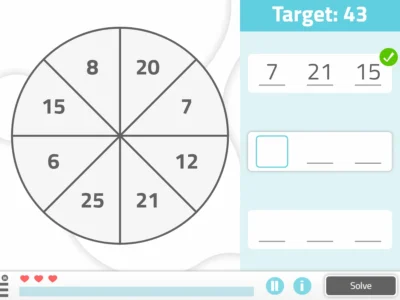Neuropsychologist Lidia García presents a guide on apraxias to provide simplicity and a better understanding of this neurological disorder.
Perhaps it has happened to you that, when consulting different sources about apraxia, you have not found agreement among the various definitions, classifications, diagnostic criteria or nomenclatures of movements given by different manuals or authors.
This post aims to bring simplicity to reading about apraxias and a better understanding, highlighting aspects of the literature that may be a likely source of confusion for readers and offering some keys to untangle important concepts.
I hope they are helpful to you.
Origin of the distinction between ideational vs. ideomotor apraxia
The distinction that predominates across texts about limb apraxias is the one made between ideational apraxia and ideomotor apraxia.
This classification comes from Liepmann’s 1920 model, which unified the existing anatomical and psychological explanations about motor control in the clinical literature of the late 19th century.
Hugo K. Liepmann, who proposed this first model of apraxias, considered that the cerebral basis of action control is a stream that connects posterior cortical areas with the motor cortex, and that converts the conscious mental images of the movement intended to be performed into the motor commands that execute it.
Under this conception of motor control, apraxia could then be due either to insufficient generation of the concept of the movement (the conscious mental images), or to interruption of the posterior-to-anterior stream, which would prevent the concept from becoming motor commands.
These two possible points of alteration in the concept-production sequence are the basis of the distinction between ideational apraxia (due to insufficient generation of the movement concept) and ideokinetic apraxia (due to insufficient conversion into motor execution), which was later renamed ideomotor apraxia.
Therefore, by assuming this classification we are also assuming, more or less implicitly, that there is a cognitive or higher level in action control, and a lower motor level, and that they can also be selectively impaired.
Criteria used in the distinction between ideational apraxia and ideomotor apraxia
The greatest source of confusion when reviewing different texts about apraxia may be the notable lack of consensus and the variability that can be found in the clinical criteria used to distinguish between the two main forms of limb apraxia; ideational apraxia and ideomotor apraxia.
Researchers are generally interested in finding impairments in some particular type of movement that give rise to a specific form of apraxia and therefore define ideational and ideomotor apraxias based on one or several of the following criteria:
- The type of gesture altered (transitive vs. intransitive; meaningful vs. meaningless; pantomime of tool use)
- The modality by which the gesture is examined (visual route by imitation, or verbal route by command)
- The type of errors committed during gesture production (content errors, timing errors, sequencing errors, omissions, misuse, etc.)
Some authors consider that a deficit in transitive gestures is characteristic of ideational apraxia, and that ideomotor apraxia affects the imitation of meaningless gestures.
Others consider that these two forms of apraxia are related to the errors made during gesture production, so that they associate ideational apraxia with content errors that affect transitive gestures and pantomimes.
Some describe ideational apraxia as a deficit in all types of meaningful gestures [4] and others define ideomotor apraxia as a deficit in the production of pantomime and imitation of gestures, on the basis of space–time errors that occur in both types of action.
And so on.
Therefore, the use of a taxonomy in limb apraxia carries risk, because the criteria are not shared by all authors and there is no universal diagnostic classification.
To recall what each type of gesture consisted of (transitive, intransitive, etc.) see the glossary below.
A useful classification of gestures considered in the examination and diagnosis of apraxias.
To have a clear schematic idea of the types of gestures usually referred to in apraxia publications, the review by Goldenberg on diagnostic criteria and Liepmann’s logic to distinguish between ideational and ideomotor apraxias can be useful.
Liepmann considered defective manipulation of real objects as a criterion to define ideational apraxia, and the alteration of gestures with empty hands to diagnose ideomotor apraxia.
His reasoning for establishing the difference this way was that real objects provide guidance and support to the hands, which is lacking when the hands are empty, and that therefore gestures with empty hands serve to examine the whole route, from concept to motor execution.
Thus, within gestures with empty hands one can consider meaningless gestures and meaningful ones, and within the latter, gestures with a meaning established by convention (for example, the military salute or the OK sign) and pantomimes of tool use.
Movements made when manipulating real objects are also usually called transitive gestures and convention-established gestures intransitive gestures.
For a description of these gestures consult the glossary included below.
All of them can be evaluated through imitation (visual route) or by verbal command (auditory route), except meaningless gestures, which are generally evaluated only by imitation, because their verbal description can overload language comprehension in patients with aphasia. Pantomimes can also be evaluated through touch.
In my experience I have found it useful to integrate Liepmann’s movement classification with the nomenclature of these movements possibly more commonly used in the articles. Here I include it in a schematic form:


Subscribe
to our
Newsletter
The definition of apraxia as a disorder of learned skills
Apraxia has been defined in different ways. Many authors pose it as a disorder in the execution of previously learned movements (in addition to occurring under certain conditions, such as being an acquired disorder, in the absence of alteration of afferent and efferent systems, and not attributable to problems of object recognition, task comprehension, or lack of motivation).
It was Norman Geschwind who replaced the concept of conscious mental images from Liepmann’s seminal model with that of learned motor skills; thus conceiving motor control as dependent on prior experience (motor memories) and on a pathway from the storage site of learned movements to their execution site.
Therefore definitions of apraxia as disorders of learned skills imply the concept of a movement store and of apraxia as a disorder that affects these memories.
It has been considered that by removing both the mental images and their conversion into execution commands, Geschwind’s model also removed the cognitive component of action control.
Today the cognitive component of apraxia is not questioned, and in the current literature definitions of apraxia as a disorder of learned movements coexist with the classification of limb apraxia into ideational and ideomotor, and therefore with the sequential concept-execution mechanism and with the cognitive component of movement control.
Other definitions of apraxia refer to a deficit in purposive movements (purposive), thus assuming the cognitive component more explicitly, while others consider it as a symptom between the cognitive and the motor.
The dual meaning of ideational apraxia
As has been pointed out, the term ideational apraxia has been used in two different ways:
- As an inability to understand how objects are used (failure in knowledge of object action), which could be interpreted as an agnosia for Object Uses.
- As an inability to perform a sequence of actions (e.g., preparing coffee or brushing one’s teeth), considered a failure in establishing the ideational plan; of the logical succession of movements, despite each movement separately being able to be performed adequately.
This dual conception overlaps with the different definitions of ideational apraxia depending on the various clinical or behavioral criteria (see volume 1 of this guide), which can add more confusion for the reader of limb apraxia bibliography.
Criteria used in general classifications of apraxias
There is some discrepancy in the literature regarding general classifications of apraxias.
The criteria that have been used to develop them include:
- Whether it presents in a unilateral or bilateral form
- The body segment involved: limbs, trunk or parts of the face
- Whether they affect language/speech
- Whether it is apraxia due to disorders in the execution of movements (motor apraxias) or due to disorders of a spatial nature (spatial apraxias such as constructional apraxia and dressing apraxia).
Some authors prefer not to consider constructional and dressing apraxias as apraxias proper but rather as spatial disorders.
A comprehensive classification of apraxias
Ardila and Rosselli propose a general classification of apraxias that integrates all the criteria mentioned above(Fig. 1)
- Motor Apraxias (Limb Apraxias)
- Bilateral
- Ideational
- Ideomotor
- Of the upper limbs
- Gait apraxia
- Unilateral
- Kinetic
- Sympathetic
- Callosal
- Facial Apraxias
- Buccofacial (Oral)
- Ocular
- Axial Apraxias
- Trunk-pedal
- Language Apraxias
- Speech
- Verbal
- Bilateral
- Spatial Apraxias
- Constructional Apraxia
- Dressing Apraxia
Glossary
- Transitive gesture: gesture performed with a real object (e.g., pick up a pair of scissors and show the examiner how they are used).
Both in the English and Spanish literature the term transitive is used, probably due to the parallelism with the use of this term in grammar when referring to verbs; because in both languages, a transitive verb is one that is constructed with a complement or direct object, which is the syntactic element that shows who or what is affected by the action of the verb.
Perhaps this is useful for readers to consolidate when a gesture is transitive and when it is intransitive.
- Intransitive gesture: gesture that is not performed with a real object. It has also been defined as expressive, symbolic and communicative actions carried out without objects (e.g., waving goodbye) and that can vary between cultures.
It would correspond to a gesture with a meaning established by convention, which we mentioned earlier and which have also been called emblems (symbols).
Other times in articles, intransitive is equated with communicative, given the communicative nature of symbols and conventions.
- Gesture with meaning: includes transitive gestures, pantomimes and intransitive gestures.
- Gesture without meaning: gestures that do not have meaning for a given population (e.g., placing the fist under the chin).
- Pantomimes (of tool use):gestural description of object use. The patient tries to represent the use they would make of an object, as if they were actually holding it in their hand.
Notes on possible confusions arising from language use and translation
- When talking about pantomimes, the reference that in pantomimes the patient “imitates” the movement they would perform if they were using a particular tool (imitate in the sense of represent) can sometimes be confused with the reference to imitation as the route by which apraxia is explored (the examiner asks the patient to imitate what the examiner does, but this is different from asking them to perform a pantomime).
In English the use of pantomime as a verb does not lead to confusion, but sometimes the terms to imitate or imitation can be found when referring to the patient performing a pantomime that has been requested verbally by the examiner, and that is not being evaluated via the visual route of imitation.
- When talking about gestures with and without meaning, English literature usually uses the terms meaningful and meaningless gestures, which when translated into Spanish in some texts come out as gestos significativos and insignificantes, instead of as gestos con y sin significado.
Although in English meaning and significance are synonyms and both refer to the importance of something, meaning has a connotation of symbolic value and also of intention; so it may be more appropriate to translate meaningful and meaningless gestures as gestures with and without meaning, rather than as significant and insignificant gestures, since the latter expressions in Spanish seem to convey the idea of important gestures and unimportant (just as when we use the expression “significant difference” in statistics).
More notes on possible confusions arising from language use and translation
- The terms purposive movementscan be translated as deliberate movements (they could also be intentional, voluntary, premeditated, decided). Other possibilities are useful movements or function-serving movements.
A movement may have no other use or function than to be performed to be evaluated by a neuropsychologist. In fact, the automatic-voluntary dissociation that occurs in apraxias is well known, when a patient does not perform a movement on command but does so spontaneously, and for this reason there are researchers who believe that limb apraxia is a disorder limited to the assessment context and that in everyday life it goes unnoticed.
It may be useful to take into account all possible translations or connotations of purposive movements when interpreting apraxia definitions and the models defended in each publication.
Bibliography
- Ardila, A. y Rosselli, M. (1992). Neuropsicología clínica. Medellín: Prensa Creativa.
- Ardila, A. y Rosselli, M. (2007). Apraxia. En E. Márquez y L. Rodríguez (Ed.), Neuropsicología clínica (p. 127-139). México D. F., México: El Manual Moderno.
- Bartolo, A. & Ham, H. S. (2016). A Cognitive Overview of Limb Apraxia. Current Neurology and Neuroscience Reports, 16:75.
- Cambridge Dictionary (s.f). [Diccionario de inglés]. Recuperado 28 abril, 2018, de https://dictionary.cambridge.org/es/diccionario/ingles/transitive.
- Goldenberg (2014a). Challenging traditions in apraxia. Brain, 137, 1854-1862.
- Goldenberg (2014b). The cognitive side of motor control. Cortex, 57, 270-274.
- Liepmann H. Apraxie. In: Brugsch H, editor. Ergebnisse der gesamten Medizin. WienBerlin: Urban & Schwarzenberg; 1920. p. 516–43.
- Portellano, J. A. (2010). Introducción a la neuropsicología. Madrid: McGraw Hill.
- Real Academia Española (s.f). [Diccionario de la lengua española]. Recuperado 28 abril, 2018, de http://dle.rae.es/?id=bbVXlxq.
- WikiDiff (s.f). Significance vs Meaning – What’s the difference?. Recuperado 28 abril, 2018, de https://wikidiff.com/content/significance-vs-meaning-whats-difference-0.
If you liked this guide on apraxia, you may be interested in these NeuronUP articles.
“This article has been translated. Link to the original article in Spanish:”
Guía para la revisión de literatura sobre apraxias







 Number Reasoning Exercise for Children: ‘That’s Odd!’
Number Reasoning Exercise for Children: ‘That’s Odd!’
Leave a Reply